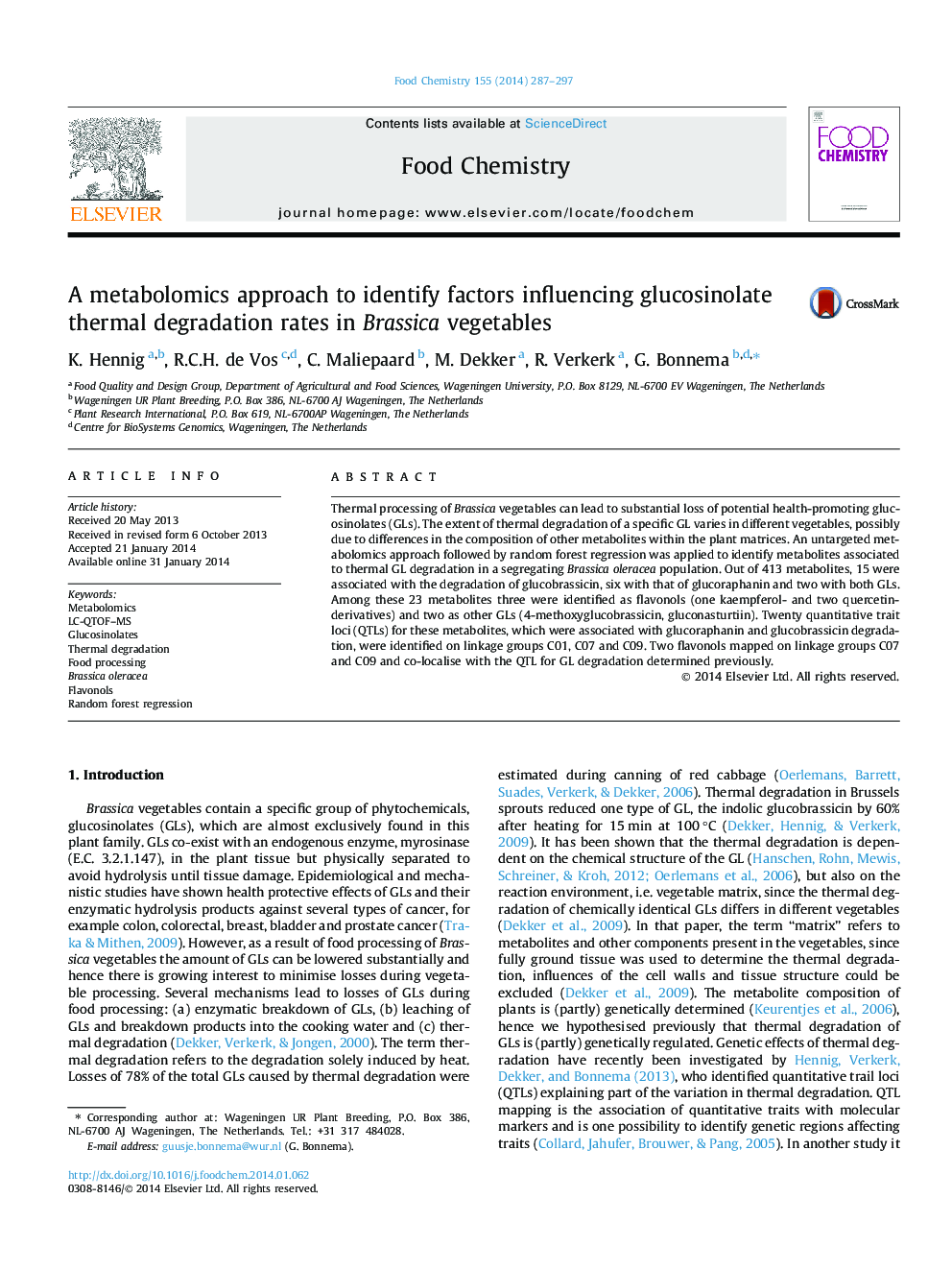| Article ID | Journal | Published Year | Pages | File Type |
|---|---|---|---|---|
| 7598504 | Food Chemistry | 2014 | 11 Pages |
Abstract
Thermal processing of Brassica vegetables can lead to substantial loss of potential health-promoting glucosinolates (GLs). The extent of thermal degradation of a specific GL varies in different vegetables, possibly due to differences in the composition of other metabolites within the plant matrices. An untargeted metabolomics approach followed by random forest regression was applied to identify metabolites associated to thermal GL degradation in a segregating Brassica oleracea population. Out of 413 metabolites, 15 were associated with the degradation of glucobrassicin, six with that of glucoraphanin and two with both GLs. Among these 23 metabolites three were identified as flavonols (one kaempferol- and two quercetin-derivatives) and two as other GLs (4-methoxyglucobrassicin, gluconasturtiin). Twenty quantitative trait loci (QTLs) for these metabolites, which were associated with glucoraphanin and glucobrassicin degradation, were identified on linkage groups C01, C07 and C09. Two flavonols mapped on linkage groups C07 and C09 and co-localise with the QTL for GL degradation determined previously.
Keywords
Related Topics
Physical Sciences and Engineering
Chemistry
Analytical Chemistry
Authors
K. Hennig, R.C.H. de Vos, C. Maliepaard, M. Dekker, R. Verkerk, G. Bonnema,
